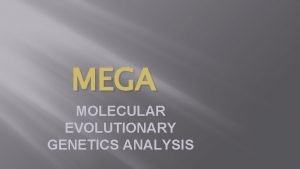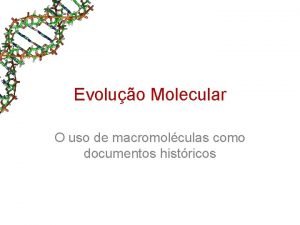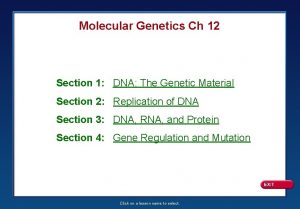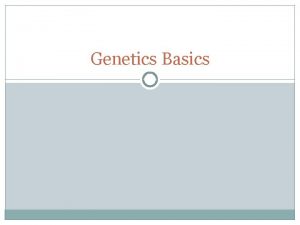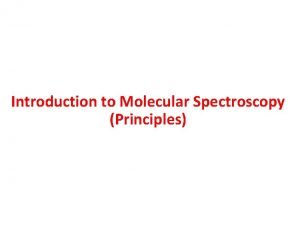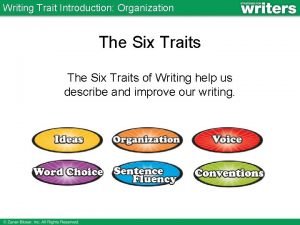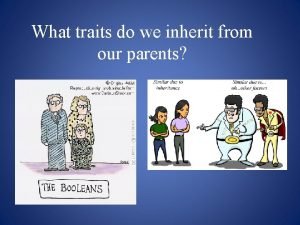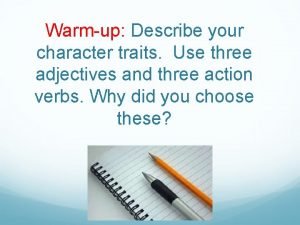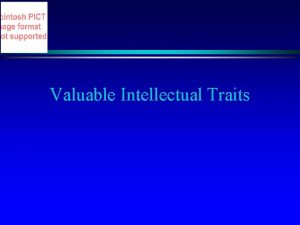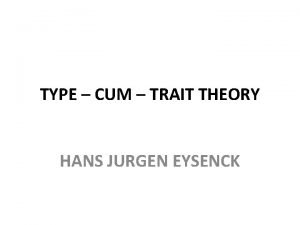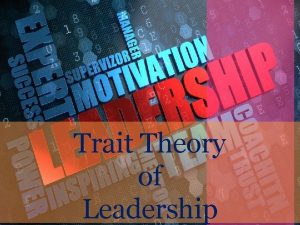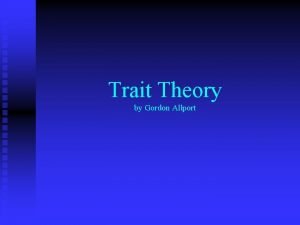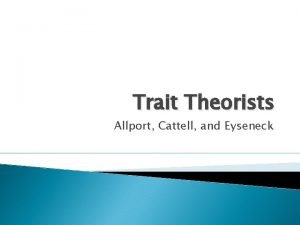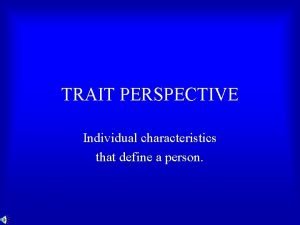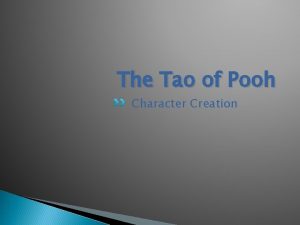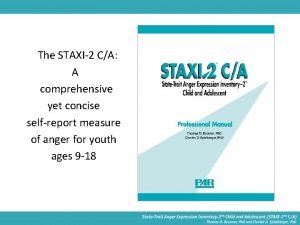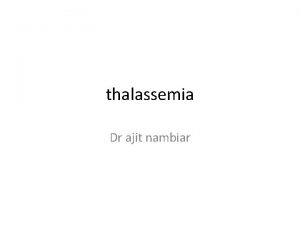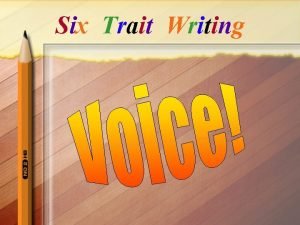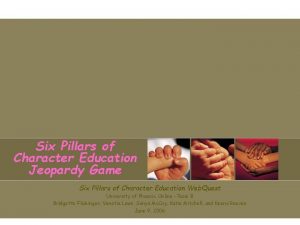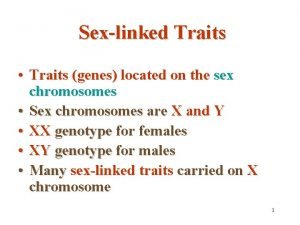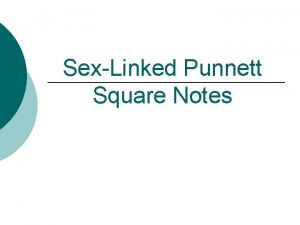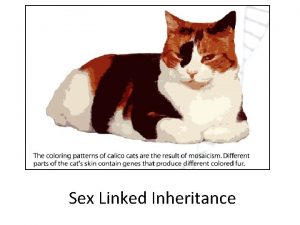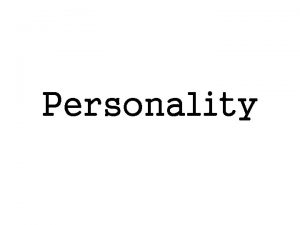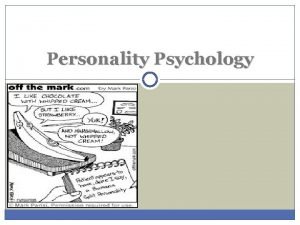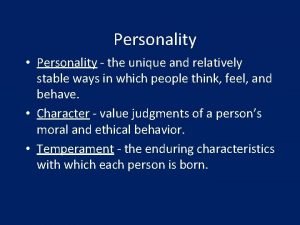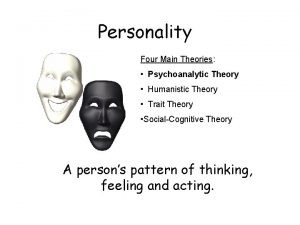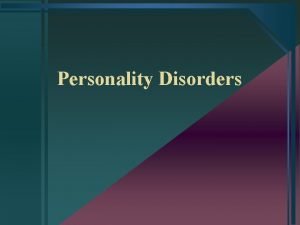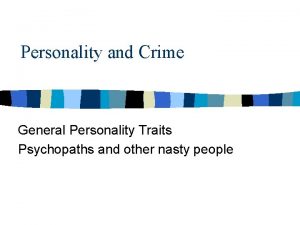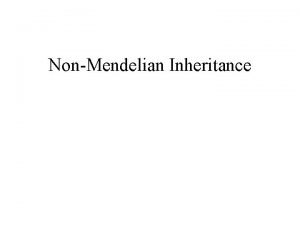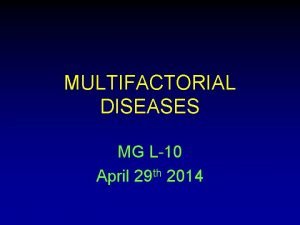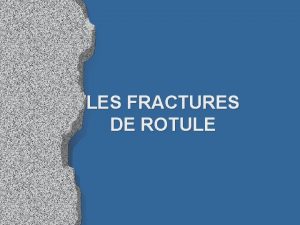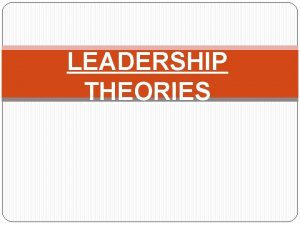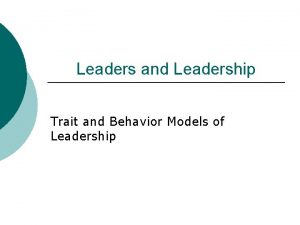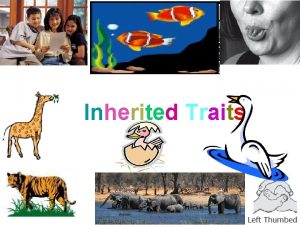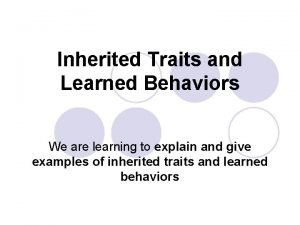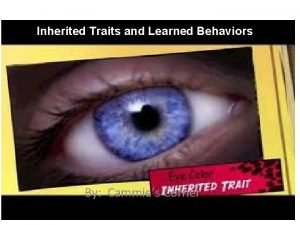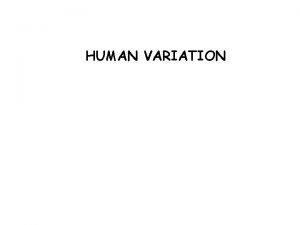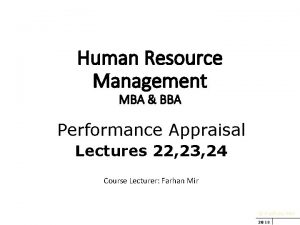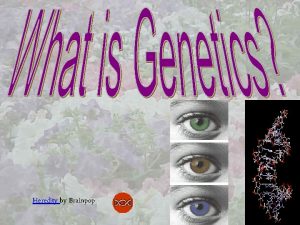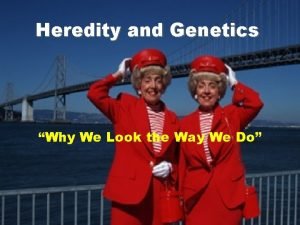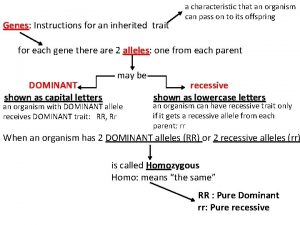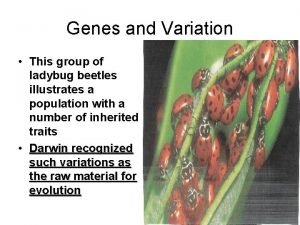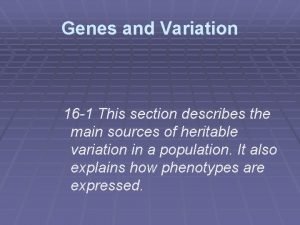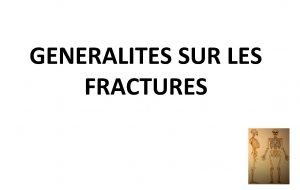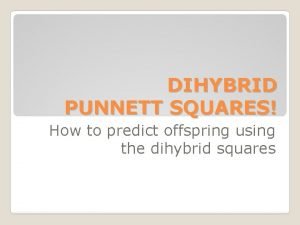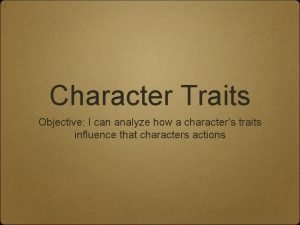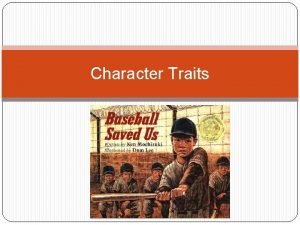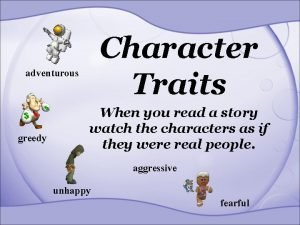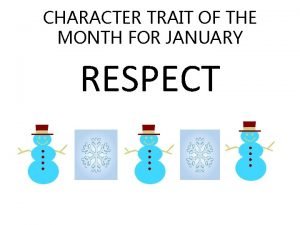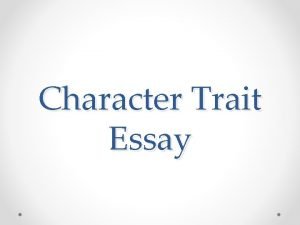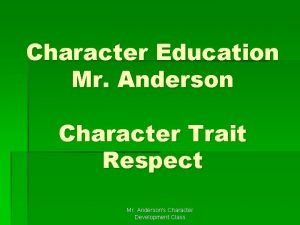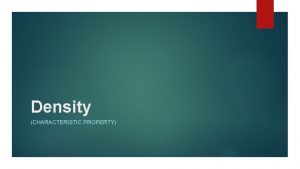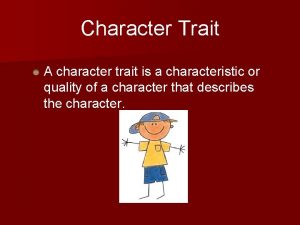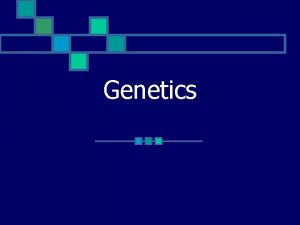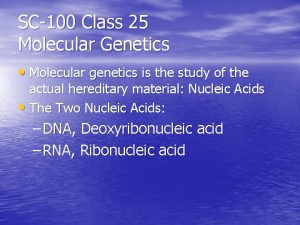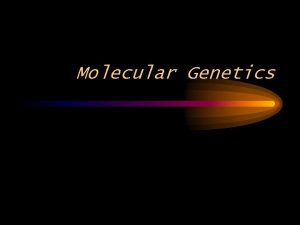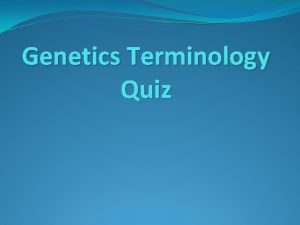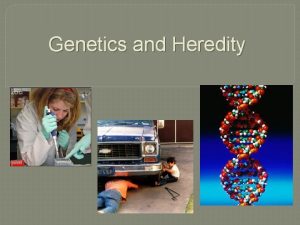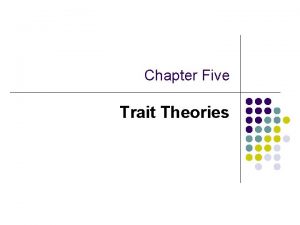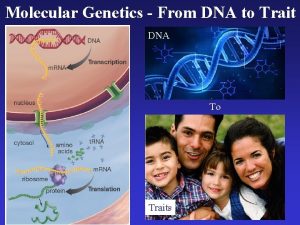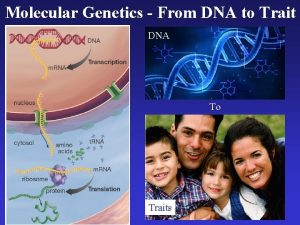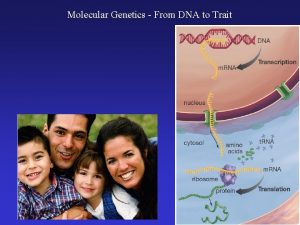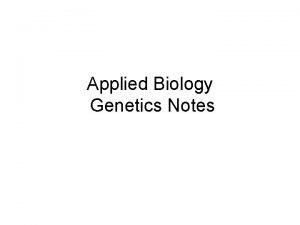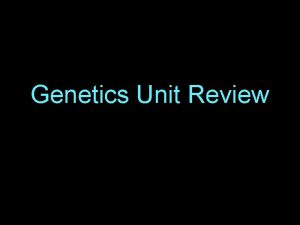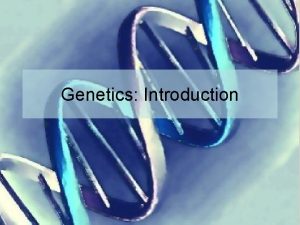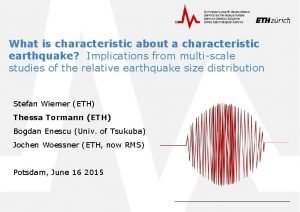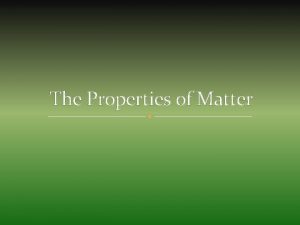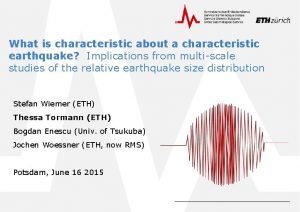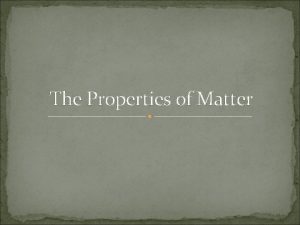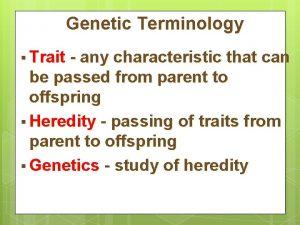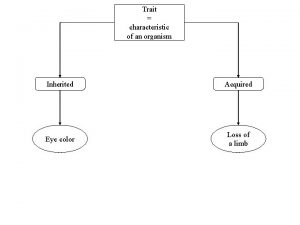Molecular Genetics A Introduction 1 Trait a characteristic






































































- Slides: 70

Molecular Genetics

A. Introduction 1. Trait: a characteristic produced by an organism’s proteins 2. Genes: a piece of a chromosome consisting of a DNA sequence that codes for a specific trait (protein synthesis). 3. Alleles: different forms/versions of a gene Example Gene: flower color Alleles: purple and white

4. Chromosome: Super-coiled strand of DNA v DNA only coils into dense chromosomes during Mitosis & Meiosis


a. Single-Stranded Chromosome: 1 strand of DNA b. Double-Stranded Chromosome: 2 identical strands of DNA, held together at one point (results after DNA replication)


B. DNA Structure 1. DNA is a large molecule (nucleic acid) made up of many nucleotides 2. Nucleotides consist of 3 parts: a) 1 sugar (deoxyribose) “Backbone” b) 1 Phosphate group c) 1 Nitrogenous base (Adenine, Thymine, Cytosine, Guanine)

3. DNA consists of 2 strands that look like a twisted ladder, called a double helix a) DNA Structure figured out by Watson & Crick in 1953 b) The 2 strands are held together between the base pairs by Hydrogen Bonds c) Base pairing: A-T and G-C “At The Grand Canyon” *The order of bases in the genes of a chromosome determines an organism’s proteins & traits.


A T base C phosphate G sugar G C

Base s o h P e t a ph r a Sug Nucleotide Hydrogen Bonds


C. DNA Replication 1. DNA replicates when cells are getting ready to reproduce/divide (mitosis & meiosis).

2. Multiple enzymes are involved in DNA replication. 3. Steps: a. DNA Helicase unwinds and unzips double helix between base pairs – Hydrogen bonds broken b. Single-stranded binding proteins keep strands separate during replication

c. Each original strand serves as a template d. DNA Polymerase attaches free-floating nucleotides to their base pairs on each template e. Result: 2 identical strands of DNA

DNA Polymerase Template Strand T AT A C GC G G C T AT A A T C GC G DNA Polymerase Template Strand

A C C T A G T G

D. Protein Synthesis 1. RNA Structure: • Single-stranded • Ribose (sugar) • Contains Uracil instead of Thymine

2. Protein Synthesis Process: a. Transcription (m. RNA synthesis) • A portion of DNA (a gene) “unzips” (Hydrogen bonds broken) • RNA Polymerase (enzyme) synthesizes Messenger RNA (m. RNA) by attaching free floating RNA nucleotides to only one of the DNA strands (template) *A binds to T, U binds to A, G binds to C, C binds to G • Newly formed m. RNA molecule detaches from template and DNA “zips up” again.

A T C G DNA strand “template” U RNA nucleotide

A T C G U A

A U T A C G G

A U T A C G

A U T A C G G C

A U T A C G G C Original DNA strand (TEMPLATE) New RNA strand

RNA Polymerase Template Strand U AT C GC G U AT A C GC


b. Translation (decoding m. RNA to make a protein) • m. RNA leaves the nucleus and goes to a ribosome • Each codon (3 bases) is read, one at a time • Transfer RNA (t. RNA) molecules AUG UCC AAG contain anticodons complementary to each codon, and carry specific CODON amino acids to those codons


• The amino acids bind together to form a polypeptide (protein) *The sequence of DNA bases controls the sequence of amino acids. * *The sequence of amino acids controls the shape and function of the protein. *



UAC AUG CAA GGU UAC CUA GAG UGA ACG

GUU UAC AUG CAA GGU UAC CUA GAG UGA ACG

GUU AUG CAA GGU UAC CUA GAG UGA ACG

CCA GUU AUG CAA GGU UAC CUA GAG UGA ACG

CCA AUG CAA GGU UAC CUA GAG UGA ACG

AUG CAA GGU UAC CUA GAG UGA ACG

AUG CAA GGU UAC CUA GAG UGA ACG

GAU AUG CAA GGU UAC CUA GAG UGA ACG

CUC GAU AUG CAA GGU UAC CUA GAG UGA ACG

CUC AUG CAA GGU UAC CUA GAG UGA ACG

ACU CUC AUG CAA GGU UAC CUA GAG UGA ACG

ACU AUG CAA GGU UAC CUA GAG UGA ACG

UGC ACU AUG CAA GGU UAC CUA GAG UGA ACG

UGC AUG CAA GGU UAC CUA GAG UGA ACG

UGC AUG CAA GGU UAC CUA GAG UGA ACG

AUG CAA GGU UAC CUA GAG UGA ACG


Amino acid chain t. RNA anticodon m. RNA ribosome codon






Example Problem DNA = TACGCCTAAATC m. RNA = AUGCGGAUUUAG Codons: AUG CGG AUU UAG Amino Acids: MET – ARG – ILE - Stop Start (Methionine) – Arginine – Isoleucine - Stop

Sample Problem DNA = TACTAACGGATT Find m. RNA, separate into codons, and find the corresponding amino acids to make a protein.

DNA = TACTAACGGATT m. RNA = AUGAUUGCCUAA Codons: AUG AUU GCC UAA Amino Acids: MET-ILE-ALA-Stop Start (Methionine) – Isoleucine – Alanine - Stop

E. Gene Mutations 1. Mutation- a change in the genetic material of a cell. • May lead to the production of an abnormal protein. 2. Mutations may be caused by errors in replication or by physical/chemical factors (Ex. X-rays, UV rays, etc. ) 3. If a mutation occurs in a gamete (sex cell), it may be transmitted to offspring.

4. Types of Mutations: a) Substitution: The replacement of a pair of nucleotides by another one. • May or may not alter the amino acid sequence. Example: DNA: Normal DNA TAC GCA TGG AAT m. RNA: AUG CGU ACC UUA Met Arg Thr Leu Mutated DNA substitution Mutated DNA TAC GTA TGG AAT TAC GCT TGG AAT AUG CAU ACC UUA AUG CGA ACC UUA Met His Met Arg Thr Leu Protein may not function Protein unaffected substitution

b) Insertion (addition) and Deletion (loss) of nucleotides in a DNA sequence, causing a frameshift • Very dramatic results Example: Insertion Normal DNA insertion Mutated DNA: TAC GCA TGG AAT TAT CGC ATG GAA T m. RNA: AUG CGU ACC UUA AUA GCG UAC CUU A Met Arg Thr Leu Ile Ala Tyr Leu shift

Sickle-Cell Anemia

Tay-Sachs Disease progressive deterioration of nerve cells and of mental and physical abilities (starts around 6 months of age & usually results in death by age 4 (autosomal recessive)

Cystic Fibrosis Abnormal transport of Cl- and Na+ in lungs, liver, pancreas, intestines thick mucus difficulty breathing, frequent lung infections, digestion problems (autosomal recessive)

F. Gene Regulation and Environmental Influence 1) Different genes are “turned on” or “expressed” in different types of cells a) This is why multicellular organisms are composed of many different types of cells – all with the same DNA.

b) Cell differentiation activates specific genes in the different cell types. Ex. The active genes in a cardiac cell are not all the same as those in a liver cell.

2) Environmental conditions may influence the expression of genes. a) Certain genes may be “turned on” or used more often in the presence of particular chemical or physical stimuli. Exposure to sunlight = tanning (increase in production of the pigments melanin). WARNING:



Ex. Fur color of the Himalayan rabbit and Siamese cat How YOU doin? I’m cold!
 Section 14-3 human molecular genetics
Section 14-3 human molecular genetics Chapter 12 section 1 molecular genetics answer key
Chapter 12 section 1 molecular genetics answer key Chapter 12 section 1 dna the genetic material
Chapter 12 section 1 dna the genetic material Molecular evolutionary genetics analysis
Molecular evolutionary genetics analysis Test cross definition
Test cross definition Molecular evolutionary genetics analysis
Molecular evolutionary genetics analysis Molecular genetics section 1 dna the genetic material
Molecular genetics section 1 dna the genetic material Chapter 12 section 1 the genetic material
Chapter 12 section 1 the genetic material Physical state of covalent compounds
Physical state of covalent compounds Giant molecular structure vs simple molecular structure
Giant molecular structure vs simple molecular structure Zinc oxide + nitric acid → zinc nitrate + water
Zinc oxide + nitric acid → zinc nitrate + water Heterozygous for blood type a
Heterozygous for blood type a Applications of uv spectroscopy
Applications of uv spectroscopy Six traits
Six traits Rolling tongue trait
Rolling tongue trait Indirect character trait
Indirect character trait What is intellectual traits
What is intellectual traits Trait theory of personality
Trait theory of personality Trait approaches to leadership
Trait approaches to leadership Trait approaches to leadership
Trait approaches to leadership Gordon allport trait theory
Gordon allport trait theory Trait theory
Trait theory Trait perspective psychology
Trait perspective psychology Tao of pooh quotes
Tao of pooh quotes Staxi2
Staxi2 Thalassemia carrier
Thalassemia carrier Vealeys model of sports confidence
Vealeys model of sports confidence Components of effective writing
Components of effective writing Character trait jeopardy
Character trait jeopardy Sexlinked traits
Sexlinked traits X-linked punnett square
X-linked punnett square Whats a sex linked trait
Whats a sex linked trait Trait theories
Trait theories Behavioral trait
Behavioral trait Allport personality theory
Allport personality theory Source traits examples
Source traits examples Sublimation defence mechanism
Sublimation defence mechanism Personality trait disorder
Personality trait disorder Qualities of a psychopath
Qualities of a psychopath Miscarriage pedigree symbol
Miscarriage pedigree symbol Secondary traits
Secondary traits Polygenetic trait definition
Polygenetic trait definition Threshold trait
Threshold trait Classification de duparc rotule
Classification de duparc rotule Fiedler leadership
Fiedler leadership Traits theory of leadership
Traits theory of leadership Personality traits meaning
Personality traits meaning Vulcan hand sign dominant or recessive
Vulcan hand sign dominant or recessive Inherited traits and learned behaviors
Inherited traits and learned behaviors Inherited vs acquired traits
Inherited vs acquired traits What are 5 acquired traits
What are 5 acquired traits Acquired traits in animals
Acquired traits in animals Threshold trait
Threshold trait Trait method
Trait method Inherited traits are brainpop
Inherited traits are brainpop Pure trait
Pure trait Instructions for an inherited trait are called
Instructions for an inherited trait are called Genes de ladybug
Genes de ladybug Section 16-1 genes and variation
Section 16-1 genes and variation Solution de continuité
Solution de continuité Dihybrid punnett square
Dihybrid punnett square Character traits for sojourner truth
Character traits for sojourner truth Objective traits
Objective traits Determination character trait
Determination character trait Character traits
Character traits Courtesy is a positive trait
Courtesy is a positive trait Character trait respect
Character trait respect Character analysis essay
Character analysis essay Ant character traits
Ant character traits Character trait respect
Character trait respect Perseverance as a character trait
Perseverance as a character trait



